By Nathan N. Prefer
The Marines were tired, eager for a rest the opportunity to get themselves and their equipment back into battle condition. But it was not to be, at least not yet. After spending a month fighting one of the bloodiest and most decisive battles of the Pacific War on the island of Saipan in the Marianas, the Marines of the 4th and 2nd Divisions were once again going into battle in a campaign that Admiral Raymond A. Spruance called “the most brilliantly conceived and executed amphibious operation in World War II.”
Marine Lt. Gen. Holland M. Smith, who had trained both Army and Marine Corps units for amphibious operations and commanded most of those conducted in the Central Pacific, asserted that the operation to capture the neighboring island of Tinian was “the perfect amphibious operation of the Pacific War.”
It was a foregone conclusion that Tinian had to be taken. When the Americans had decided to seize the Marianas, Saipan, Tinian, and Guam, were selected because of their size and adaptability to the development of airfields, which would put the home islands of Japan within bombing range of American aircraft. Acquiring such airfields was a major objective of the Marianas campaign, and Tinian, barely three miles from Saipan, had some of the best terrain in the entire island chain for airfields. Maj. Gen. Harry Schmidt’s V Amphibious Corps was ordered to capture Tinian.
“Playing by Ear”
In retrospect, the planning for the invasion of Tinian seems almost haphazard. While the plans for the capture of Guam and Saipan were developed months before the actual assault, the planning for Tinian was put off until the earlier efforts were concluded. A Japanese naval offensive that resulted in a resounding defeat in the Battle of the Philippine Sea further delayed the planning for Tinian. Vice Admiral Harry W. Hill, who commanded the naval amphibious forces for Tinian, later remarked that plans for the landings were in effect “playing by ear.”
Intelligence gathering had begun early. Maps, photographs, and charts of the island were acquired and distributed to the assault units. During a stopover at Eniwetok, the V Amphibious Corps developed a tentative plan for the Tinian attack. This was submitted to General Smith who, concerned about the two other attacks he was responsible for, decided to hold the plan until the Saipan operation was well under way and he could get a better view of developments. The Tinian plan lay dormant during the first weeks of the Saipan operation.
Once southern Saipan had been cleared, American planes began routine flyovers of Tinian to gather intelligence on terrain and enemy defenses. Ships of the covering forces cruised offshore to gather even more data, particularly on possible landing beaches. Soon the entire enemy order of battle on Tinian was known to the Americans, as were the location of the major defensive positions. Even natives of Tinian who were caught on Saipan when the Americans invaded that island provided useful information on the terrain and reefs at Tinian. Later the claim would be made that all but three of the major enemy defensive positions on Tinian were known to V Amphibious Corps before the actual invasion.
The Defenders of Tinian
Those defenses were well equipped. They included six 70mm guns, 12 75mm guns, six 37mm high-velocity cannons, 12 tanks, 10 140mm coast defense guns, and 10 120mm dual-purpose mobile artillery guns. There were additional coast defense guns, antiaircraft guns and more than 100 machine guns available to the defenders. Concrete pillboxes defended the expected landing beaches.
Manning these defenses was a conglomeration of units placed there by fate and circumstance. As was common on these Central Pacific islands, the garrison was a mixture of Imperial Japanese Army and Imperial Japanese Navy troops. The largest single unit was Colonel Keishi Ogata’s 50th Infantry Regiment. The regiment had served in Manchuria from 1941 to 1944 before being transferred to Tinian in March. Ogata, as the senior Japanese Army officer, nominally commanded the entire defense. The rest of the regiment’s parent unit, the 29th Infantry Division, was about to be annihilated on Guam.
The 50th Infantry Regiment was a standard Japanese infantry regiment with three infantry battalions, a 75mm mountain artillery battery, and a company each of engineers, signal, and medical troops. It also contained one antitank platoon armed with six 37mm guns. Attached was the divisional tank company equipped with 12 light tanks, a vehicle platoon, and a detachment from the 29th Infantry Division’s hospital. In many respects it mirrored an American regimental combat team. Colonel Ogata also had available the 1st Battalion, 135th Infantry Regiment, which had been training in amphibious assault tactics on Tinian when the Americans invaded Saipan, thereby separating it from its parent unit. Ironically, had the American invasion been delayed for a week or more, Ogata and his command may not have been on Tinian at all, as they were under orders to move to Rota, another island in the chain, the same day that the Americans landed on Saipan.
The Imperial Japanese Navy was also well represented on Tinian. In fact, the highest ranking officer was not Colonel Ogata, but Vice Admiral Kakuji Kakuda. Kakuda was an unusual flag officer for the Imperial Japanese Navy. Physically, he was taller than six feet and weighed over 200 pounds. He was also an alcoholic. He had previously led Japanese naval air forces against Balikpapan and Borneo. Later he commanded the 2nd Carrier Striking Force in the attack on Dutch Harbor, Aleutian Islands. He had also fought in the naval battles around Guadalcanal until posted to command the 1st Air Fleet on Tinian.
The major unit of the Imperial Japanese Navy on Tinian was the 56th Keibitai, or Naval Guard Force. Commanded by Captain Goichi Oya, its members believed that they were under Admiral Kakuda’s command, but Oya hid the fact that Admiral Kakuda had relinquished any and all command responsibilities and that in fact the entire island defenses were under Ogata’s command. The 56th Keibitai was a base defense force, not unlike the U.S. Army and Marine Corps base defense battalions then garrisoning islands farther east that had recently been conquered by the Americans. Its power lay in its fixed artillery and antiaircraft weapons. On Tinian it controlled three Britishmanufactured 6-inch coast-defense guns and 10 140mm coast-defense guns. Among many antipersonnel weapons available were three 120mm dual-purpose guns like those that had wreaked havoc during the 2nd Marine Division’s invasion of Tarawa the year before.
There were two other forces defending Tinian. The stranded air and ground crews of the 1st Air Fleet were added to the defenses. Although untrained in infantry tactics, they added numbers. Finally, the Japanese had organized a home defense militia, known variously as the Civilian Militia, Home Guard, or Youth Organization. These latter groups played no part in the battle to come, instead seeing to the safety of their families.
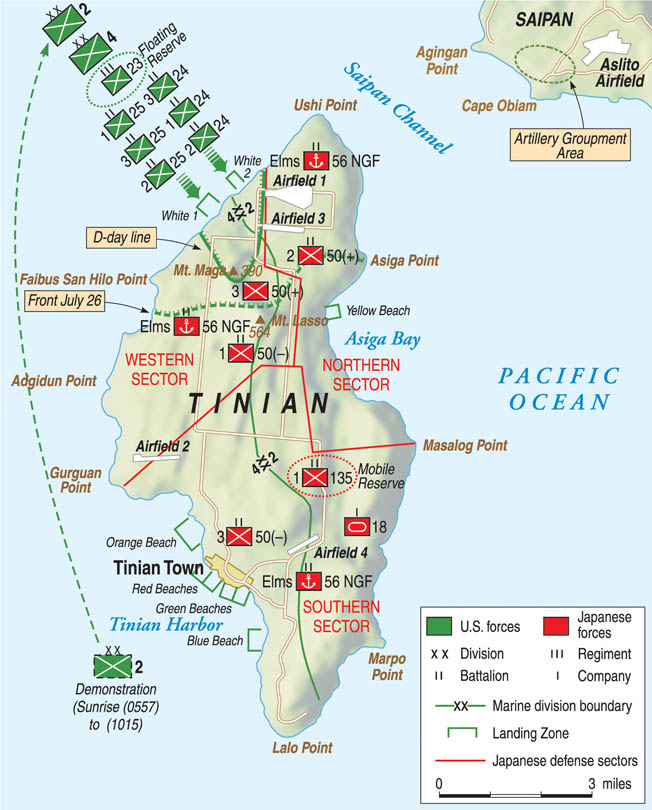
As was typical of the Japanese military at this stage of the war, neither the Imperial Japanese Army or Navy worked well with their opposite number. Colonel Ogata discounted the assistance the 56th Keibitai could provide and gave few orders to Captain Oya after assigning him a defensive sector. Similarly, Oya took little notice of sectors outside his own and continued to pretend that his orders came from Admiral Kakuda, who spent his time trying unsuccessfully to escape the island by submarine. Ogata was not particularly innovative and still believed in the standard Japanese response to amphibious assault: defense at the water’s edge. Although this theory was fast losing credibility among Japanese leaders after the failures at Tarawa, the Marshall Islands, Guam, and Saipan, Ogata maintained his faith in the tactic. In fact, his water’s edge defense of Tinian would be one of the last times it was practiced in the Central Pacific.
Red Staff, Blue Staff
General Smith had earlier divided his staff into two groups, the Red Staff and the Blue Staff. The Red Staff was given responsibility for planning the Saipan and Tinian invasions. Saipan and Guam would be invaded first, then once those islands had been secured, Tinian would be taken.
One aspect of the early Marine plan had the Americans landing on Tinian’s north shore with artillery on nearby Saipan available for initial support. Fifth Amphibious Corps had used this tactic earlier during the invasion of the Marshall Islands when the 4th Marine Division and 7th Infantry Division had placed their artillery on small offshore islands.
Once it was clear that Saipan was falling to the V Amphibious Corps, planning for Tinian gained momentum. By late June, General Smith had turned over command of V Amphibious Corps to Maj. Gen. Harry Schmidt, who in turn gave command of the 4th Marine Division to Maj. Gen. Clifton B. Cates. The naval support forces came under the command of Rear Admiral Harry W. Hill, who had previously commanded the close-support naval forces at Saipan.
The White Beaches vs Tinian Town
Both Admiral Hill and General Schmidt were unhappy with the initial planning for Tinian. Intelligence identified only two beaches, one on the east and the other on the western side as suitable for a landing. Both were obvious landing sites and therefore well defended by the Japanese. Schmidt preferred a plan developed by his planning officer, Lt. Col. Evans F. Carlson, the former Marine Raider now on the staff of the 4th Marine Division, who advocated a landing on the northern beaches to avoid heavy casualties and more losses in already scarce equipment. Carlson, in his early days as a Marine Corps Raider battalion commander, had studied Tinian as a possible target of one of his raids. Although it never came off, the earlier planning had directed Carlson’s attention to the small northern beaches as possible landing sites, avoiding the enemy’s main defenses on the eastern and western beaches. Another planner, Brig. Gen. Graves B. Erskine, chief of staff of V Amphibious Corps, believed that the northern beach plan was the product of a combined effort of the Fifth Amphibious Corps planning staff. Whatever the facts, the American planners were now interested in the northern beaches. It remained to be seen whether they could get a large amphibious assault force across those same beaches effectively.
With Navy and Marine Corps planners in general agreement, the commanders turned to finding out if these beaches, now christened the White Beaches, were feasible to land the two Marine divisions. From aerial reconnaissance it was known that White Beach One was 60 yards wide while White Beach Two was 160 yards wide, far smaller than the usual 1,000-yard width that was standard for American amphibious assault doctrine at this stage of the war. Exits off the beaches were unknown and had to be investigated. The defenses at these beaches had to be researched, and the weather, reef, and tide conditions all taken into consideration before a decision could be made.
There was another problem to be addressed. The assault forces for Tinian would be under the command of Vice Admiral Richmond Kelly Turner, an experienced amphibious force commander whose nickname, “Terrible Turner,” stemmed from his often irascible temper in extreme situations. Turner had decided that the assault force would land at the Sunharon Bay, or Tinian Town beaches, which were known to be the most heavily defended on Tinian.
Admiral Hill had suggested the White Beaches to Admiral Turner only to be rebuffed. Undeterred, he decided to circumvent Turner’s order to concentrate planning on the Sunharon Bay Beaches by creating two planning staffs. One would follow Turner’s order. The other, however, would investigate the feasibility of a landing over the northern White Beaches. Hill and Schmidt arranged for a combined reconnaissance of the White Beaches. The V Amphibious Reconnaissance Battalion of the Marines and the Navy’s Underwater Demolition Teams 5 and 7 would together reconnoiter the two White Beaches.
“He Simply Would Not Listen”
On July 10-11 the Navy swimmers and Marine reconnaissance men actually landed on Tinian at the White Beaches and made their observations. After some dangerous moments, including a contrary tide that endangered the UDT men’s return to their boats, they completed the mission and reported to Admiral Hill and Generals Smith and Schmidt. A second operation the following night verified the earlier findings.
With the reconnaissance report in hand, Hill once again went to Admiral Turner. He later recalled of Turner, “He simply would not listen, and again ordered me in very positive terms to stop all White Beach planning and to issue my plan for the Tinian Town landings, which had already been prepared.” But this time Admiral Hill was equally determined. Instead of returning to his flagship, he went ashore on Saipan and sought out General Smith. He quickly secured General Smith’s agreement to the White Beach plan and then sought out Admiral Spruance, commander of the entire operation and Turner’s immediate superior.
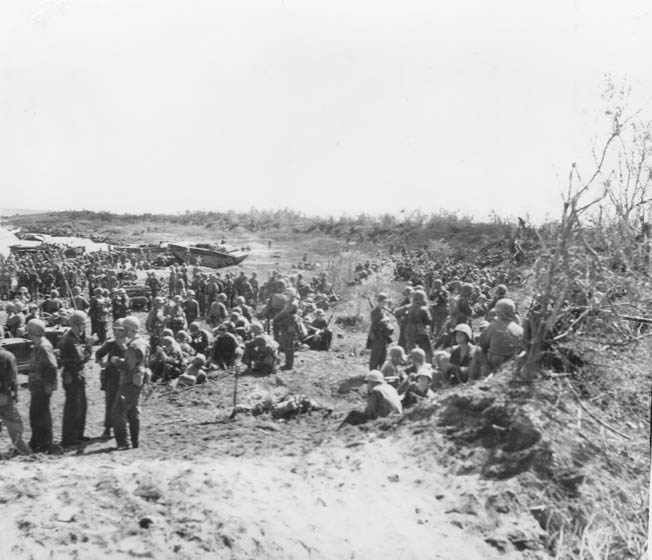
Spruance was impressed with Admiral Hill’s plan and called a conference for that same afternoon, July 12, 1944. Meanwhile, General Smith, as anxious as Hill to avoid unnecessary casualties among the Marines, sought out Admiral Turner and demanded that the White Beach plan be accepted. Both men were drinking, and the conversation turned loud. At one point Turner bellowed for all to hear, “Holland, you are not going to land on the White Beaches. I won’t land you there.”
“Oh yes you will,” replied Smith. “You’ll land me any goddamned place I tell you to. I’m the one who makes the tactical plans around here. All you have to do is tell me whether or not you can put my troops ashore there.”
The argument continued for some time but the only result was that Turner agreed to postpone a final decision until all the data on the White Beaches had been reviewed. Despite this and other disputes, Turner later remarked, “I consider Holland Smith a very fine tactical general and able administrator and I consider him one of my very best friends.”
Turner also called a final conference for July 12, and Spruance attended this conference, canceling his own. Once again General Smith threatened to take up the White Beaches issue with Admiral Spruance. But after the White Beach plan was presented, and with Hill’s views already well known, Turner calmly announced his agreement with the White Beach plan. Spruance then had no disagreement to referee. The Marines would invade Tinian over the White Beaches. Turner later said that he maintained his opposition only because all the information necessary to evaluate the White Beach plan had not been compiled and once it had been he ruled in favor of it.
The Marines Hit White Beach
On Jig Day, July 24, 1944, General Cates’s 4th Marine Division landed on the White Beaches. In addition to the innovative landing plan, Tinian also saw the first use of napalm against entrenched enemy positions across the island. Further, some Landing Craft, Infantry (LCI) usually used to transport assault troops to the beach were armed with 40mm guns to provide close fire support to the leading assault waves of Marines. Neither of the weapons innovations worked well. The napalm test was inconclusive, and the LCIs bounced too much on the rough seas to deliver accurate supporting fire.
Supporting the landing, the battleship USS Colorado opened fire on the enemy coastal guns at Faibus San Hilo Point. These british manufactured guns were the largest enemy weapons on the island. Captain William Granat controlled the fire of the Colorado’s 16-inch main battery and destroyed the enemy position. Near Tinian Town, UDT swimmers conducted a feint to draw Japanese attention away from the north of the island. Later, the 2nd Marine Division would also feign a landing in the area.
The 4th Marine Division embarked at Tanapag Harbor on Saipan in a confident mood. Although they had just completed a month of heavy fighting on Saipan and their ranks were thinned from the loss of 6,612 battle casualties in that campaign, the Marines had been promised that Tinian would be “short and sweet.” Supporting this claim was the fact that their equipment consisted only of a weapon, ammunition, rations, spoon, poncho and a pair of clean socks. Their packs, bedding rolls, and gas masks had been left behind on Saipan as unnecessary. One Marine remarked, “It’s a silly picnic kit.”
Colonel Franklin A. Hart’s 24th Marines would land on White Beach One and Colonel Merton J. Batchelder’s 25th Marines would hit White Beach Two. Colonel Louis G. DeHaven’s 14th Marine Artillery Regiment would land its light battalions behind the assault troops, with its heavy battalions coming in later. Colonel Louis R. Jones’s 23rd Marines were in reserve. The first into the fight were Commander Draper L. Kaufman’s UDT Team 5, whose mission was to destroy obstacles and mines at the beaches. Difficult conditions made this task dangerous, but Kaufman and his swimmers accomplished their mission in spite of difficult tides and surf. Fortunately, the Japanese had neglected to maintain their mines, and nearly all had been rusted to ineffectiveness. For leading this dangerous mission, Kaufman received his second Navy Cross. Supported from Saipan by the Army’s XXIV Corps Artillery, the Marines moved ashore.
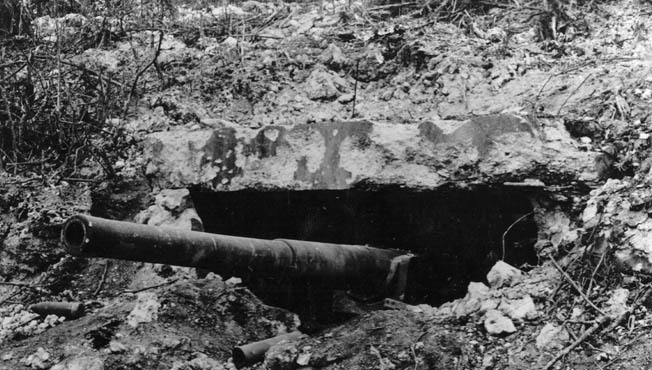
Diversion at Tinian Town
Meanwhile, at Tinian Town the 2nd Marine Division, short by 6,170 Saipan battle casualties, was feigning a landing on the expected beaches. Colonel Ogata believed the diversion was real and opened fire on the transports and their supporting warships. A previously undisclosed 6-inch gun opened up on Colorado, quickly scoring 22 hits and killing or wounding dozens of the ship’s crew. Seaman 1st Class Raymond M. Roberts, a gun captain aboard the battleship, was one of the seriously wounded, but he remained at his gun until he was mortally wounded by a second hit. He received a posthumous Navy Cross.
Gunners Mate 2nd Class Albert Daniel Stredney received the Navy Cross for heroically fighting fires that threatened to ignite a devastating explosion. Captain William Granat, who kept his ship in action despite her serious wounds, also received that award. Immediately, the destroyer USS Norman Scott moved between the battleship and the enemy gun. Captain Seymour Dunlop Owens risked his ship to protect the wounded battleship and fought the enemy gun until he was killed at his post. He was awarded a posthumous Navy Cross. Eventually, both damaged ships withdrew. Two days later, gunfire from the battleship USS Tennessee destroyed the enemy gun.
This costly diversion had worked, however. Colonel Ogata remained fixed at Tinian Town and up north both the 24th and 25th Marines came ashore. They could only land eight tractors at a time on White Beach One and 16 at White Beach Two. Opposed by a machine gun and a 40mm anti-aircraft weapon, the 25th Marines landed at 7:50 am. Dust and smoke obscured much of the area, but Captain Jack F. Ross Jr.’s Company E of Major Frank E. Garretson’s 2nd Battalion, 24th Marines landed right in the middle of the beach defenses. Already understrength, they had other troops delayed by the need to climb out of the landing craft on nearby reefs and coral ridges, since there was not enough room for all to land on the beach at once.
Beachhead Secured
On White Beach Two, Lt. Col. Lewis C. Hudson’s 2nd Battalion, 25th Marines pushed ahead despite all obstacles and soon the beachhead was secured against light opposition. Alongside, Lt. Col. Justice M. Chambers’s 3rd Battalion, 25th Marines also faced mines and booby traps made from bottles of beer, watches, and other items sure to attract the unwary American soldier or Marine. The 25th Marines were in their third assault landing and these deadly items held no attraction for them.
A few vehicles were destroyed by the mines, but the advance continued without pause. Behind the combat Marines, engineers of the 4th Marine Engineer Battalion and the 1341st Army Engineer Combat Battalion were already struggling to clear the beaches for following waves of troops and supplies. Lt. Col. Richard K. Schmidt had tanks and bulldozers of his 4th Tank Battalion ashore by afternoon, clearing exits from the two small beaches. The 2nd Battalion, 24th Marines had reached the edge of the first enemy airfield before dark.
The 4th Marine Division had achieved what many thought impossible. They had secured a usable and defendable beachhead over the small White Beaches of northern Tinian. Now it remained to be seen if they could use it to clear the rest of the island. Colonel Ogata, surprised by the landing behind his main defenses, immediately ordered a counterattack to push the Marines back into the sea. His only option was to drive them off Tinian with a strong and decisive counterattack.
Colonel Ogata’s Counterattack
Ogata sent the 1st Battalion, 135th Infantry and his own regiment’s engineers to counterattack. Joining them were 1,000 airmen from the defunct Naval Air Corps and some of Captain Oya’s men who were in the White Beach area. Japanese tactics were good, using darkness to assemble and move men, thereby avoiding American air reconnaissance and attack. Artillery and tank support was arranged. However, Ogata had no intelligence on the American force and remained unaware that his 2,000 men were already facing over 15,000 Marines, with more to come. Concerned that the landing on the northern beaches was a feint, he held his remaining battalions in their defensive positions at the eastern and western beaches.
It was a dark and rainy night when the Japanese soldiers and airmen came up against Lt. Col. Otto Lessing’s 1st Battalion, 24th Marines. Led by air officers wearing white gloves, the 600 attackers were blasted by the dug-in Americans who knew that an attack was inevitable. Tanks of Company B, 4th Marine Tank Battalion added their weight to the destruction. At dawn some 476 dead Japanese were found on the field.
Private First Class Cecil R. Tolley manned a machine gun with Company A, 1st Battalion, 24th Marines during the attack. When enemy grenades wounded all other members of his crew, Pfc. Tolley, despite painful wounds of his own, remained at his post, going through more than four boxes of ammunition and protecting his wounded companions. He finally passed out from loss of blood as the counterattack faded away. He survived to wear his Navy Cross home to Calhoun City, Missouri.
Captain Irving Schechter, a reserve officer from New York, had commanded Company A, 24th Marines since the division was first organized in 1943. His company had been attached to Major Garretson’s 2nd Battalion, 24th Marines for the landing, and his men had been among the first on the beach. He remembered, “As I waded in, I turned to give some orders to my radio operator only to see the poor guy floating in the surf. He had been hit in the head by a bullet.”
Schechter led his company that night in the defense of a flank position against repeated attacks. Three attacks came in, and each one was repulsed. By dawn, only 30 of the 100 men of Company A that had landed on Tinian were still on their feet. Schechter received a Navy Cross. Later, some 500 enemy dead were counted in front of the 25th Marines lines.
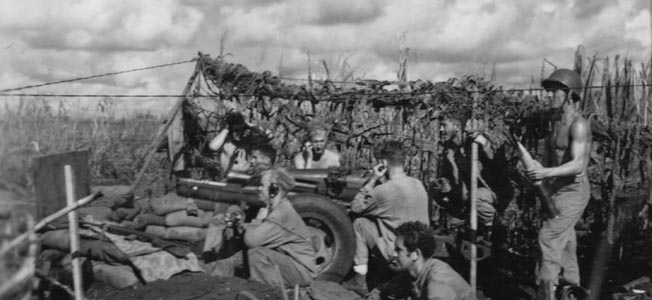
More than 100 of those dead were the result of the stand of Corporal Alfred J. Daigle and Pfc. James C. Yeaple of the 25th Marines. These two machine gunners stood their ground when all around them had been killed or wounded. Despite direct fire from enemy small arms, mortars, and grenades, they held their position until the enemy attack overwhelmed them both. Each received a posthumous Navy Cross.
27 to 1
The Tinian beachhead had been secured. Marines of the 24th and 25th Regiments destroyed the bulk of the attacking Japanese forces. Despite desperate resistance, the battle for Tinian had been won. Schmidt’s V Amphibious Corps conquered Tinian in a nine-day campaign at a cost of 328 killed and 1,571 wounded. Two Medals of Honor and additional Navy Crosses were awarded to Marine and Navy participants. Having been outflanked by the unexpected landings at the White Beaches, Ogata’s men, their prepared defenses now facing the wrong way and useless, reverted to cave warfare with the occasional counterattack. As always, such fighting was deadly to the attacking Marines. It was equally deadly and unproductive to the defenders as over 9,000 Japanese soldiers and sailors fell defending the island.
With a killed in action ratio of 27 to 1, Tinian was certainly one of the most successful island campaigns of the Pacific War. Were it not for the planning and the courage of the experienced, although tired and depleted, Marine units that carried it out, the American losses would no doubt have been far greater. Tinian’s most significant contribution to the war effort took place almost exactly one year later, when the Boeing B-29 Superfortress bomber Enola Gay took off from the island bound for Hiroshima with an atomic bomb.
General Harry Schmidt and his V Amphibious Corps went on to more battles, including one of the war’s deadliest fights at Iwo Jima. The Marines were preparing to invade Japan when the Enola Gay left Tinian. The 2nd Marine Division remained in the Marianas for months, mopping up Japanese stragglers on Saipan and Tinian before returning to Hawaii. The 8th Marine Regiment of the division participated in the Okinawa conquest and it, too, was preparing to invade Japan when a second B-29, Bock’s Car, took off from Tinian, bound for Nagasaki with a second atomic bomb. The ”perfect operation” had finally come full circle.
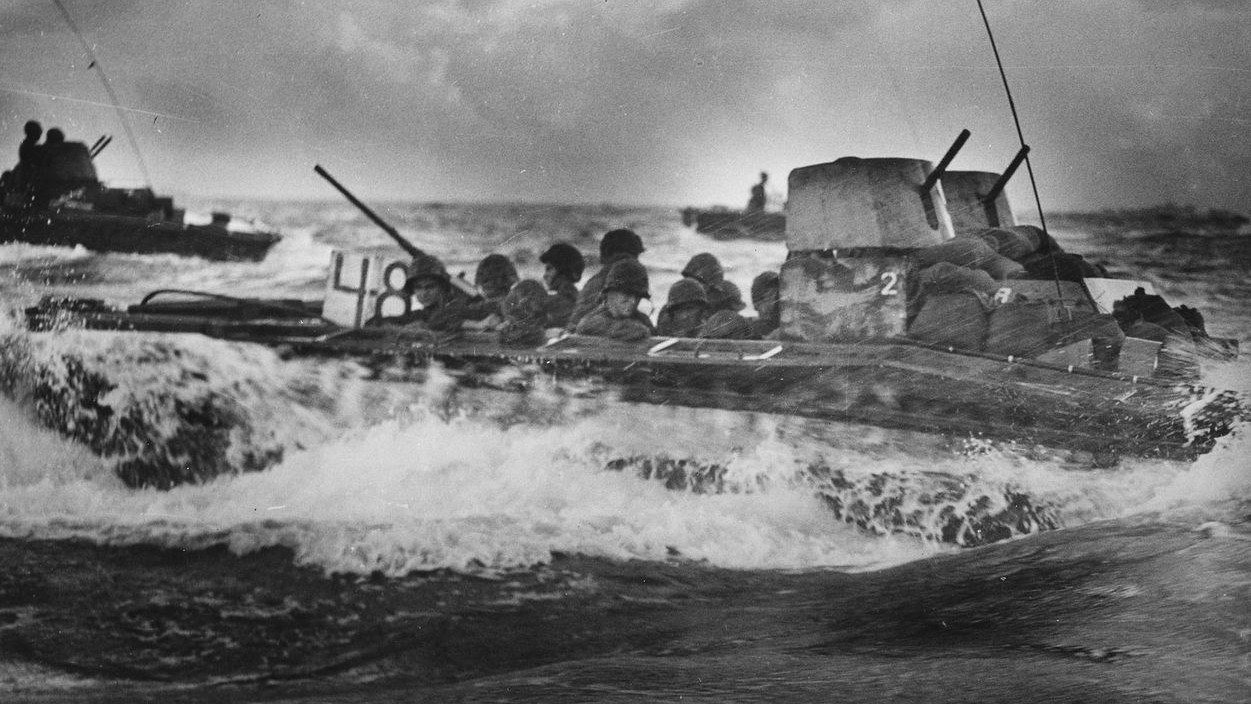
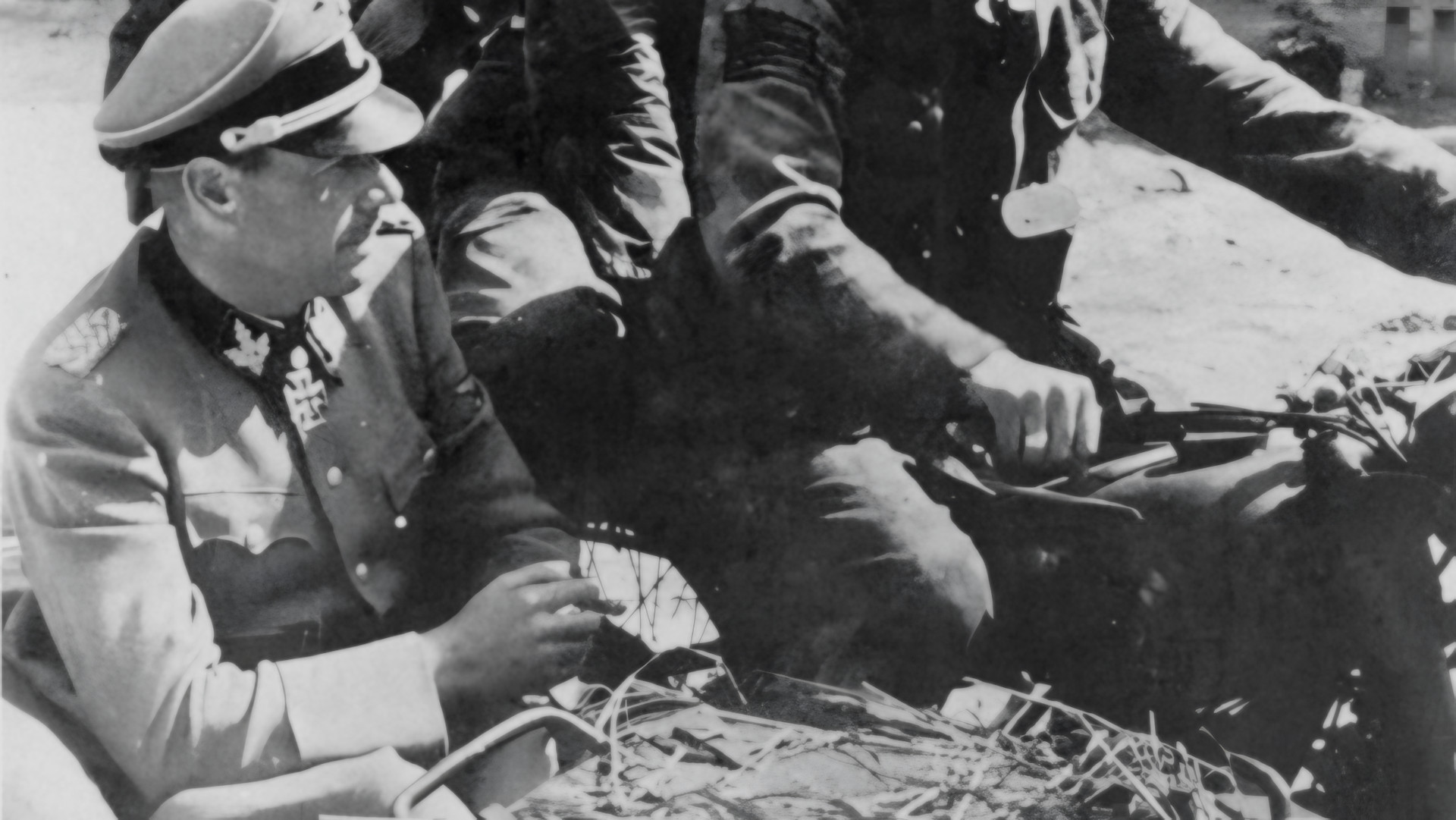
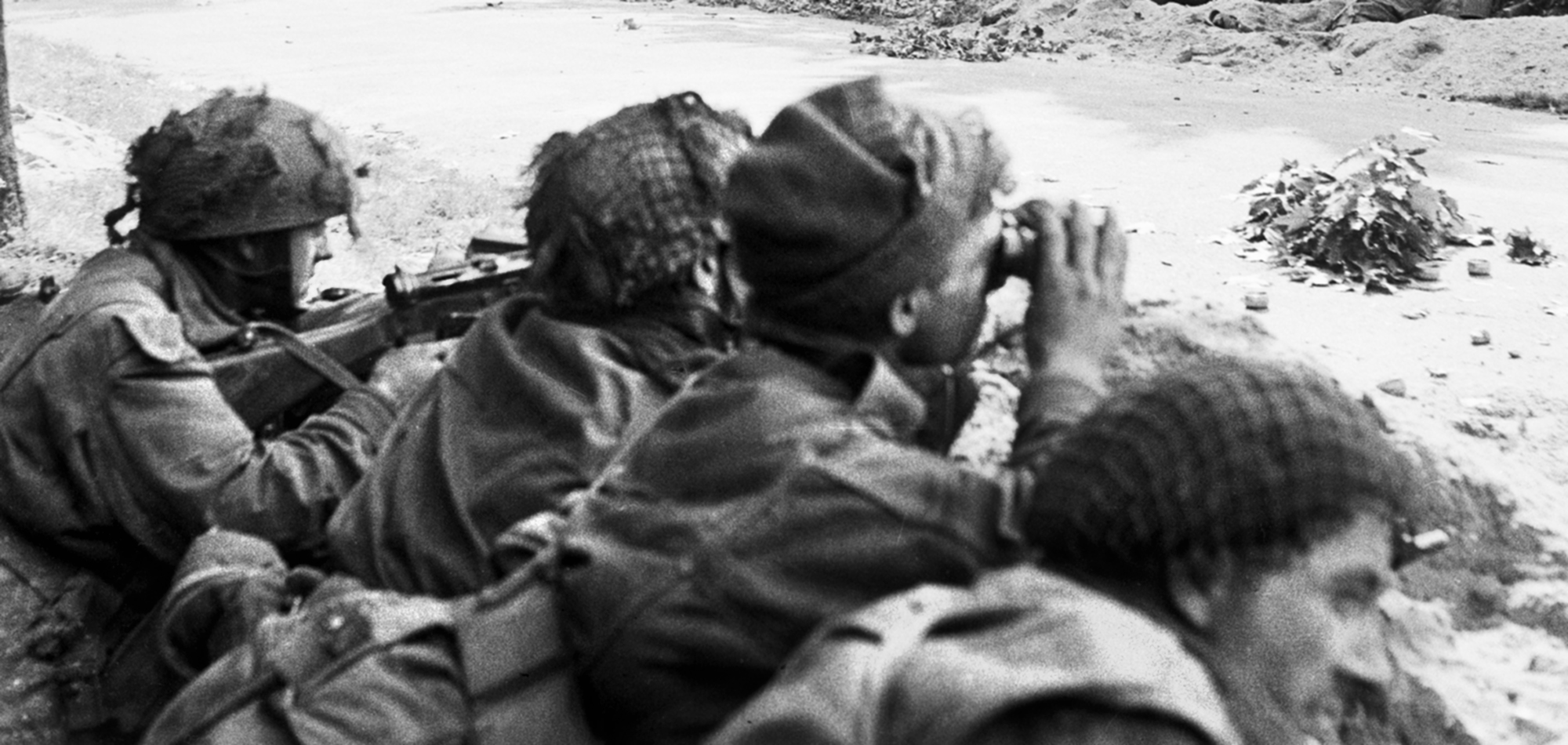
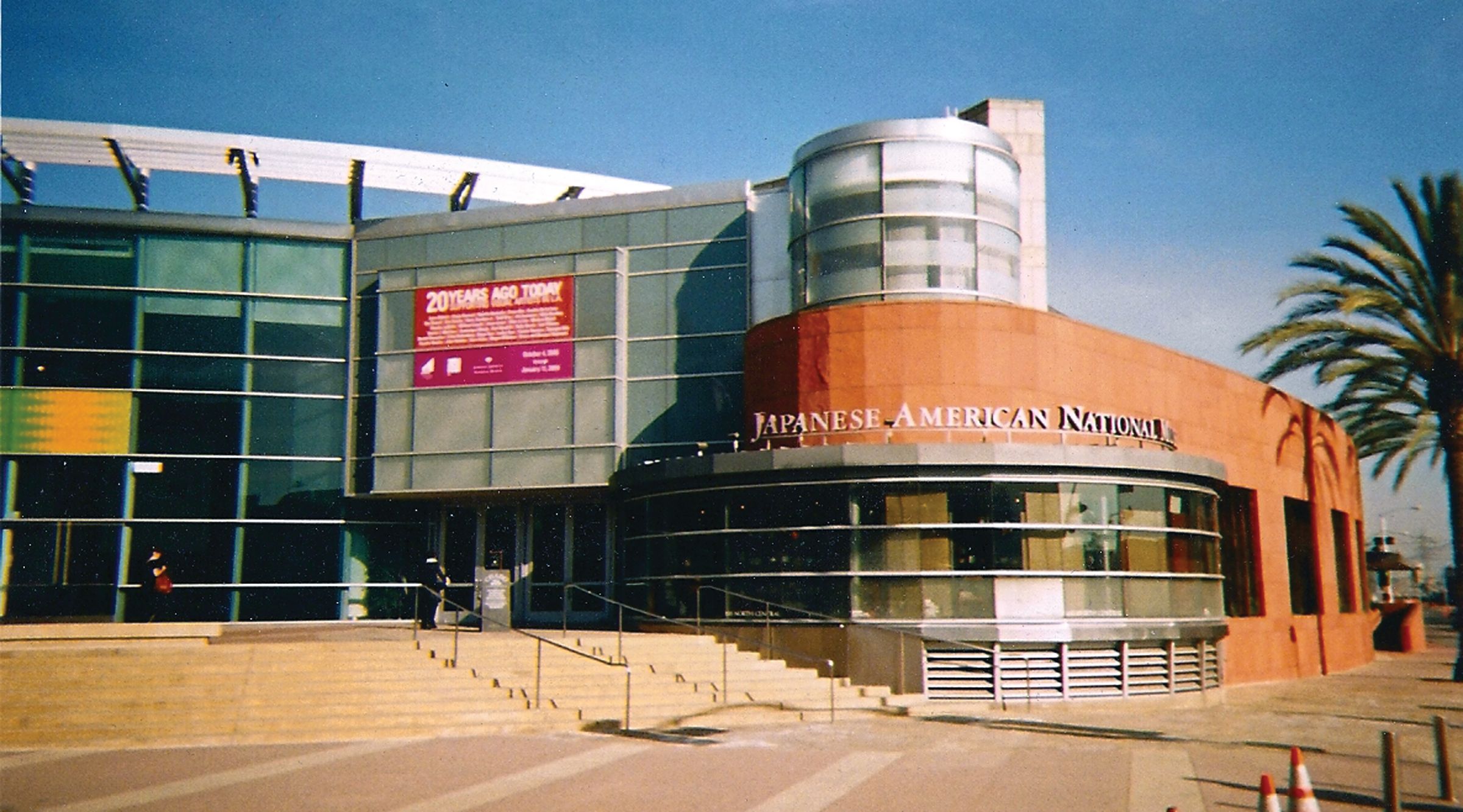
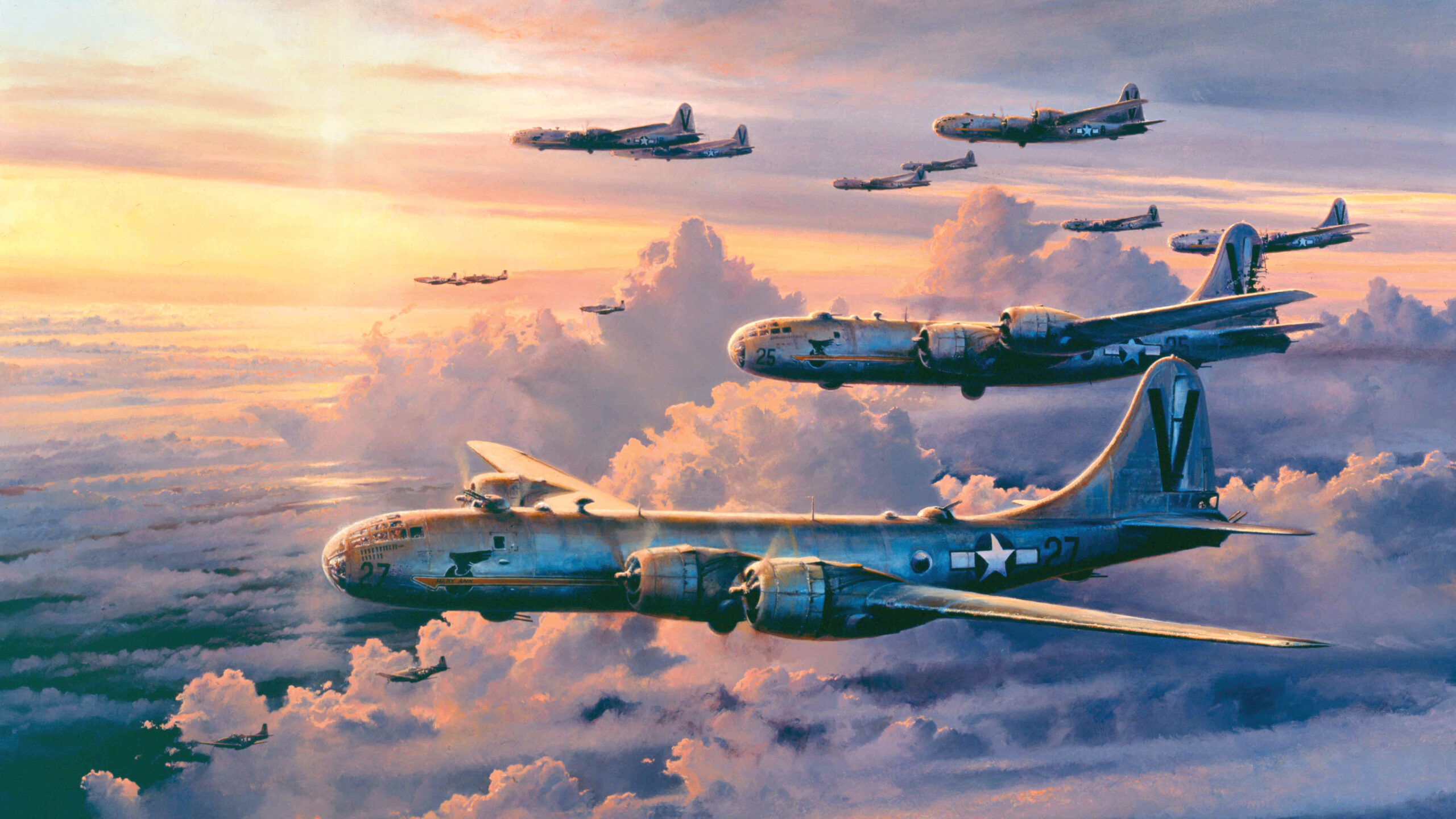
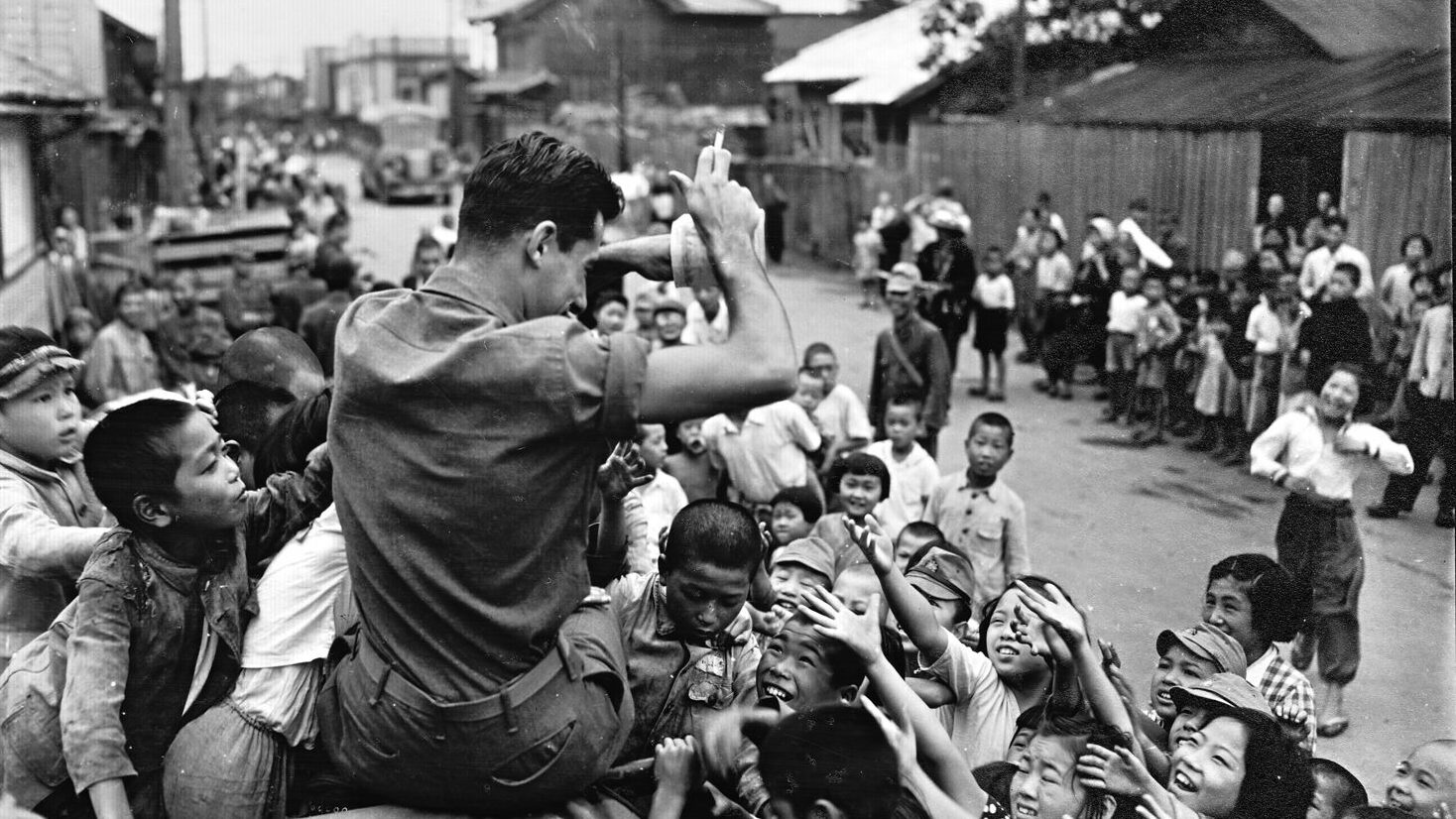
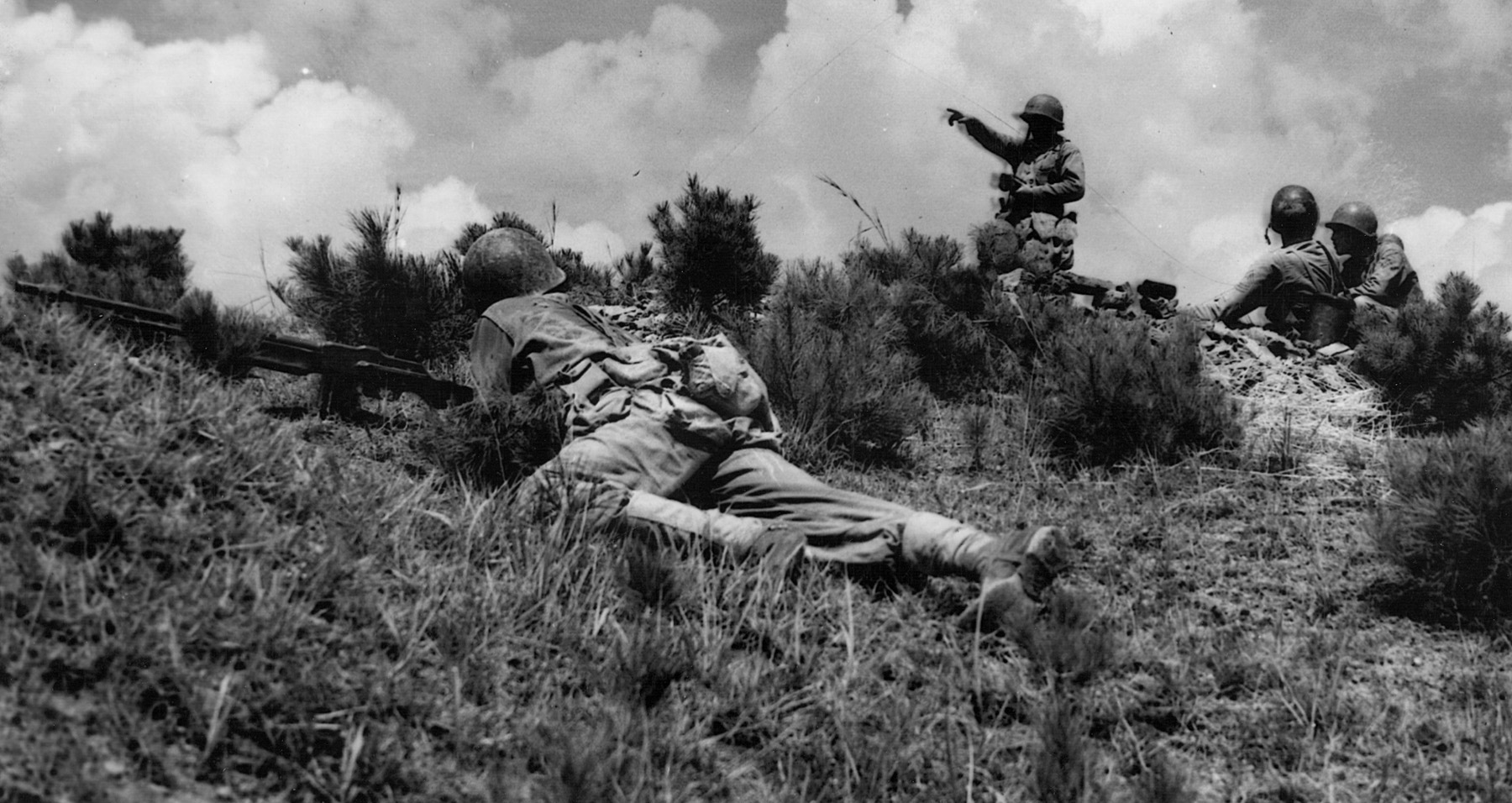
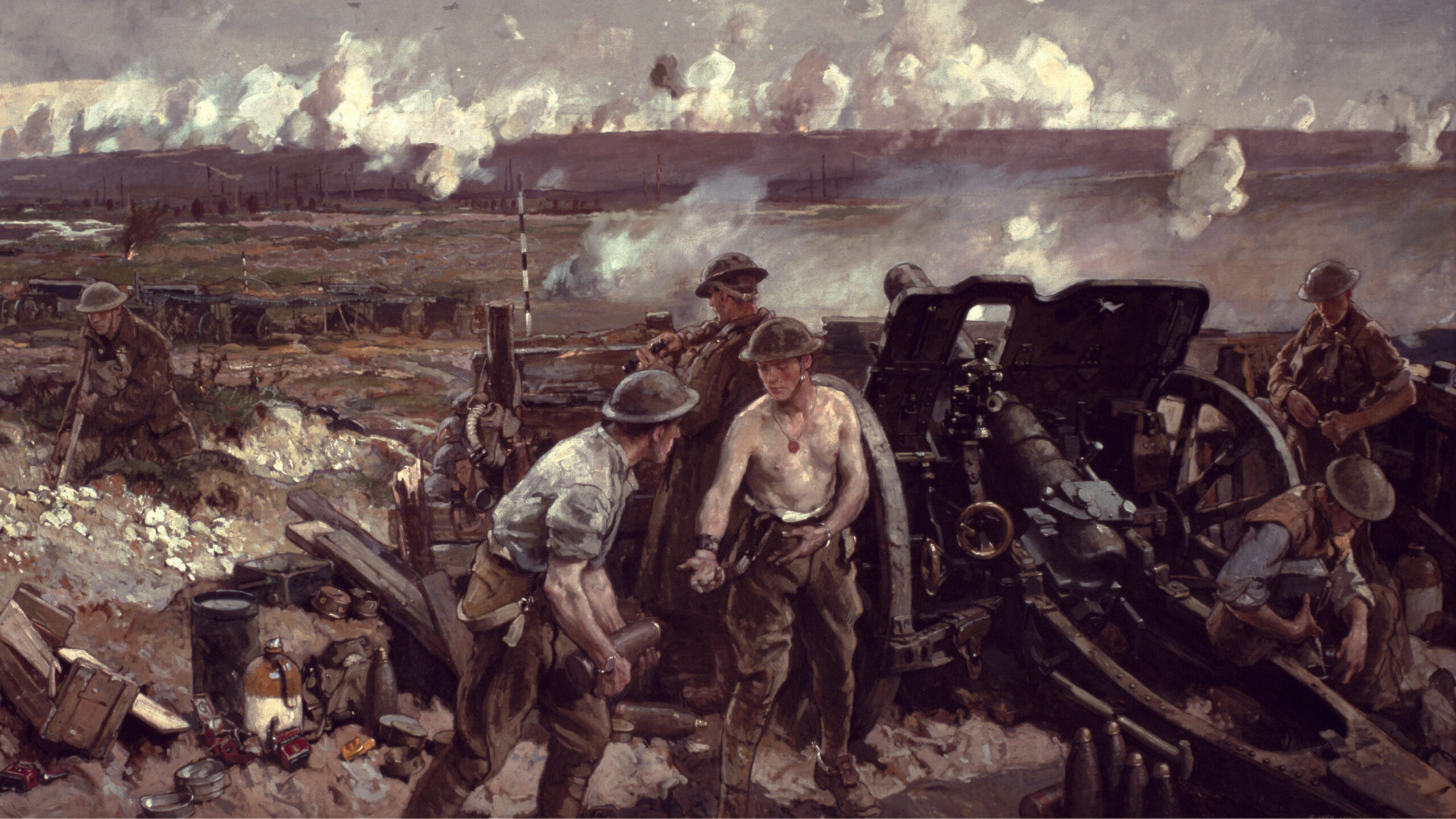
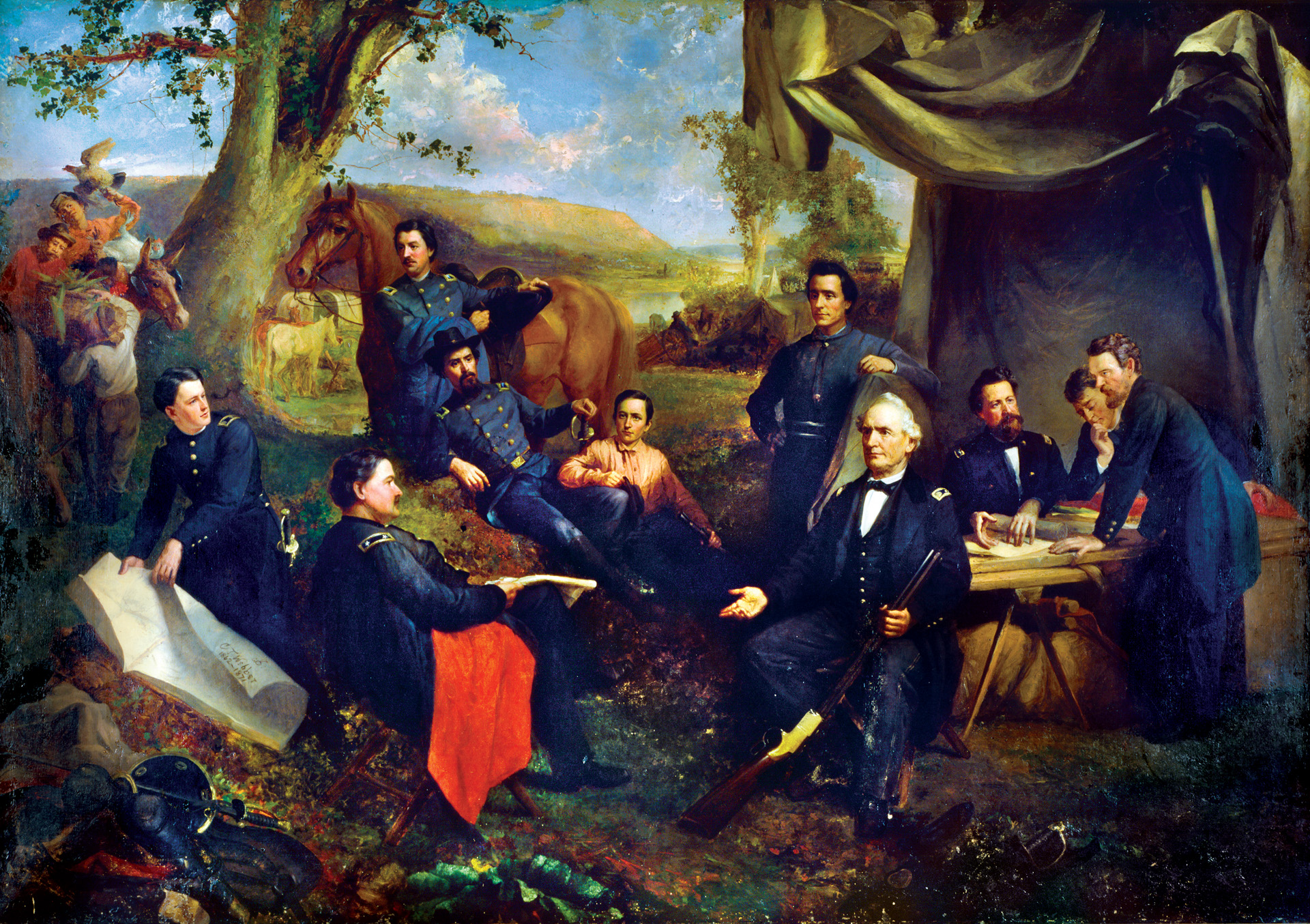
Hello,
Right now I’m on a deployment with the Seabees and I was wondering if there was any historical records of specific spots on the island. I have done some exploration of the north side of the island and can clearly see the battle scenes. If there is any more information or battle sights I could visit I would greatly appreciate anything.
Thank you.
Peyton
If your still out there I have some information about some Air Rescue Caches on several islands the Army Air Corps hid for ditched B-29 crews. Drop me an email and I will send you the information I have. Maybe you can hire a boat to go find them!
It was one of my retirement plans but my health is now too messed up to go